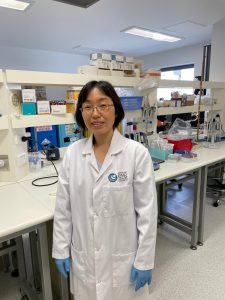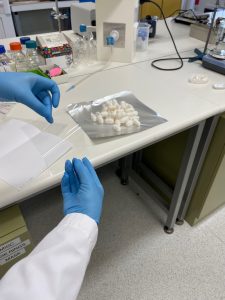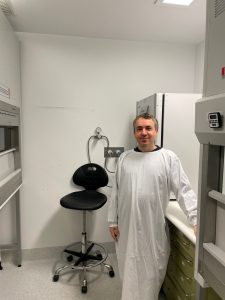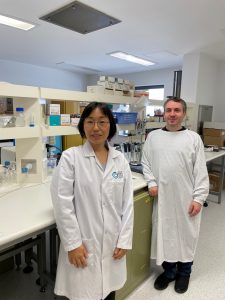National Science Week is celebrated throughout Australia from 14th – 22nd August
With a focus on science and technology, we sat down with Dr Shuko Suzuki, Senior Research Officer at Queensland Eye Institute to find out more about her work as a scientist and the importance of research.
Becoming a scientist seemed to be the natural path for Shuko as she had an interest in science and enjoyed laboratory work. Then while at university, inspired by her supervisors in the Polymer Chemistry Group at QUT and UQ, she developed a greater interest in biomaterials and wanted to continue working in this field. Shuko is very intrigued by the complexity of the eye and eye diseases.
Working as a Researcher at Queensland Eye Institute
We wanted to find out about what Shuko enjoyed most about her job as a researcher.
Shuko explains, “Research may sound like an unglamorous job, but it’s actually a lot of fun and never boring. I enjoy each step of research, such as identifying and studying a problem, planning, conducting laboratory works and analysing data.”
A career as a scientist
When asked what advice Shuko would say to children and teenagers today thinking about becoming a scientist, she says, “Treasure your favourites because we become great at things we like. Take opportunities for research trips and laboratory visits to experience the real science world. “
Potential sight saving research
Shuko is involved in a number of research projects at QEI. Working alongside QEI Chief Scientist Prof. Traian Chirila and Research Assistant Dr Onur Sakiragaoglu they are looking at the benefits of developing silk protein-based biomaterials (from silk cocoons) for ocular tissue repair (cornea and retina). Restoring sight for those with injuries and degenerative eye diseases (age-related macular degeneration, glaucoma and diabetic retinopathy) could one day be a possibility using silk proteins.
Shuko explains, “Although silk is a familiar material to us that has been produced from cultivated silkworms since BCE, there are still unknown potentials for various applications. Silk fibroin, which forms the fibres, possess remarkable mechanical properties, biocompatibility and controllable biodegradability, that makes it an ideal material for cellular substrates for tissue regeneration.
We create micron-thick, transparent fibroin membranes for growing ocular cells to be used in cell therapies. Silk sericin, which is a natural adhesive coat for the silk fibres, has been suggested to possess antioxidant activity. Oxidative stress is known to involve in the pathogenesis of several ocular diseases. We are assessing antioxidative effects of silk sericin against induced oxidative stress in in vitro ocular cell culture models.”
It is this oxidative stress that has been associated with the major degenerative eye diseases. As there is no current treatment to reverse the effects caused by this stress on the retina, it is promising that QEI has seen a significant antioxidative effect from solutions of sericin isolated from silk cocoons added to cells grown in the laboratory.
What are your ambitions?
Shuko is modest about the team’s achievements and is equally humble when it comes to her own ambitions. When asked about her ambitions, she adds, “I hope that our development will one day help patients and make them smile.”
With QEI’s aim to save sight, we hope that with more research into silk protein-based biomaterials, we can do just this.



